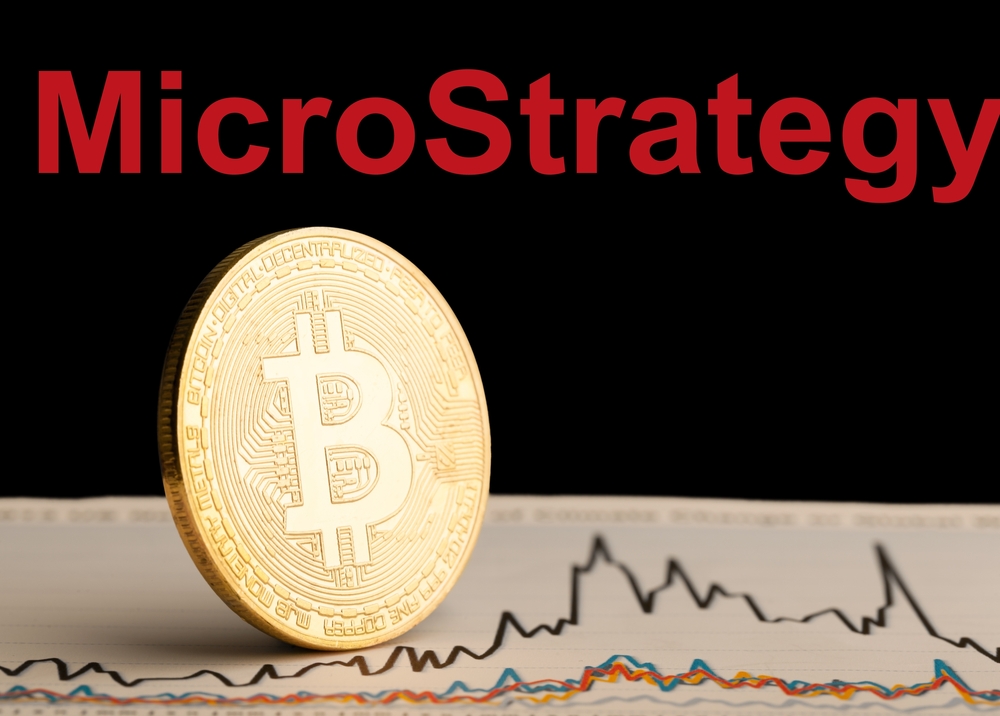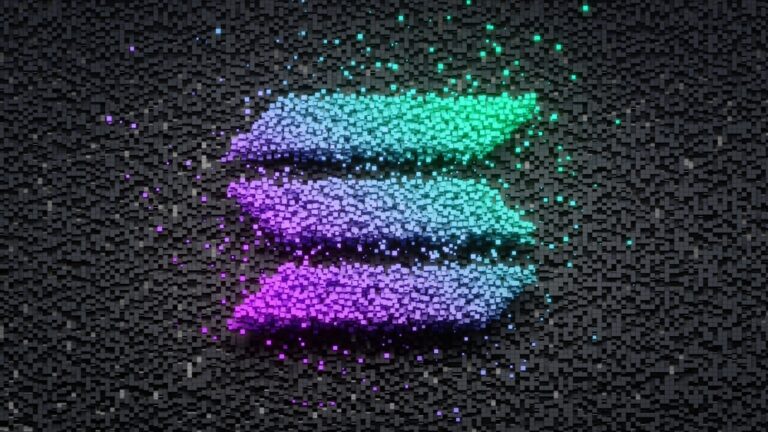Table of Contents
ToggleIntroduction
Chainlink, a decentralized oracle network, has been making waves in the blockchain and cryptocurrency space for quite some time. Its primary function is to securely provide off-chain data to on-chain smart contracts, effectively bridging the gap between the two realms. To further enhance the network’s performance and security, the Chainlink team has introduced Staking version 2.0, an evolution of the initial staking concept.

Staking in Chainlink 2.0 involves participants locking up their LINK tokens to support the network’s operations and earn rewards in return. Node operators, who run and maintain the infrastructure necessary for Oracle data transmission, are required to stake a certain amount of LINK tokens as collateral. This staking process aims to incentivize and ensure honest behavior by node operators, thus enhancing the network’s overall security while also providing an opportunity for token holders to contribute and share in the network’s success.
With Chainlink Staking version 2.0, the decentralized oracle network is poised to fortify its position in the rapidly evolving Web3 ecosystem. The enhanced staking mechanism not only amplifies the security aspects of the network, but also empowers node operators and the broader community to actively participate and benefit from the development of Chainlink and the blockchain landscape.
Key Takeaways
- Chainlink Staking version 2.0 enhances the network’s security and incentivizes honest behavior among node operators.
- Participants in Chainlink staking can lock up their LINK tokens to support the network, earning rewards in return.
- The advancements in Chainlink staking fortify its position in the Web3 ecosystem and promote active participation from the community.
Understanding Chainlink Staking Version 2.0

As the evolution of decentralized oracle networks continues, Chainlink has introduced a new version, Chainlink 2.0, which brings several key improvements to its staking mechanism. In this section, we will discuss the economics and adoption of Chainlink Staking Version 2.0, highlighting the significant advancements it offers.
Economics 2.0
Chainlink Staking Version 2.0 introduces a more robust economic model for staking LINK tokens. The ExplicitStakingmodule enhances the security of the network and provides better incentives for node operators. Staked LINK tokens act as collateral, ensuring the enlisted nodes’ service quality and fostering a more reliable oracle network.
Here are some key points regarding Chainlink Economics 2.0:
- Enhanced staking dynamics: The new model allows node operators to stake higher amounts of LINK tokens and obtain proportional rewards to their stakes.
- Improved sybil resistance: Though the staking process admits sybil attackers, it deters them by requiring a substantial amount of LINK tokens as collateral. This measure minimizes the impact of malicious actors on the network.
- Increased network security: The upgrade promotes decentralization in the oracle system, thus improving the overall security and trustlessness of the network.
Adoption and Migration
The transition to Chainlink Staking Version 2.0 involves migrating from Ethereum to its own dedicated blockchain. The migration aims to provide better scalability, performance, and cost-efficiency for the Chainlink network. Here are some key points to consider:
- v0.1 release: The initial release of Chainlink 2.0 is focused on demonstrating its enhanced staking capabilities and economic model. Its features are tested in a sandbox environment to ensure stability and compatibility with Ethereum before expanding to other blockchains.
- Seamless transition: Chainlink aims to provide a smooth migration process, ensuring that users and node operators can easily adopt the new version without major disruption to the system.
- Diverse blockchain support: While initially integrated with Ethereum, Chainlink 2.0 is designed to support other blockchain platforms in the future. This capability positions Chainlink to be a leading oracle provider for the entire Web 3.0 ecosystem.
In conclusion, Chainlink Staking Version 2.0 brings substantial improvements to the economics, security, and scalability of the network. By fostering a more reliable and robust oracle system, it paves the way for mainstream adoption and seamless integration into the expanding Web 3.0 landscape.
Participating in Chainlink Staking

Eligibility and Access
To participate in Chainlink staking, users must first ensure they meet the eligibility requirements. One common method for determining eligibility involves staking a specific number of LINK tokens Chainlink 2.0, which are the native tokens of the Chainlink network. By staking these tokens, users gain access to the decentralized oracle network and its associated rewards.
For some users, gaining early access to Chainlink staking may be a crucial step. In such cases, eligible participants can apply for the Early Access Eligibility program, which grants them the ability to stake and receive rewards ahead of the general release. To get started, users can simply access the Early Access Eligibility App and follow the on-screen instructions.
Rewards and Incentives
Chainlink offers various incentives to attract staking participants and promote network growth. Staking rewards are one of the main attractions, as users who stake their LINK tokens can receive a portion of the network’s rewards, typically in the form of additional LINK tokens. The more tokens a user stakes, the larger their share of rewards.
In addition to staking rewards, Chainlink also provides other incentives to users, such as early access benefits for eligible participants. Early access allows users to begin staking and receiving rewards before the broader market, giving them a potential head start in accruing benefits from the network.
The Chainlink staking system aims to create a healthy, competitive, and robust decentralized oracle network that rewards its participants fairly. By offering various incentives and rewards, Chainlink encourages users to stake their tokens and contribute to the network’s growth and overall success.
Security Aspects of Chainlink Staking

Security Guarantees
Chainlink 2.0 brings several security enhancements through its staking mechanism, which helps protect against malicious activities and ensure the integrity of the oracle network. This is achieved by introducing a more security-conscious approach, with measures such as requiring oracle nodes to stake a certain number of Link tokens to participate in the network. Chainlink’s cryptoeconomic security guarantees are designed to deter malicious actions through the economic incentives and potential penalties imposed on nodes.
One of the main features of Chainlink staking is the non-linear stakes impact, which means that as more nodes provide data and lock more tokens in staking, the overall security of the network increases. This creates a virtuous cycle of economic security, where the more nodes join and stake, the more robust and resistant to attacks the Chainlink network becomes.
Securing Oracle Services
Chainlink oracle services play a crucial role in providing accurate and reliable data to smart contracts. Chainlink 2.0 takes a security-first approach by ensuring that oracle services are secured with multiple layers of protection. These security assurances help maintain trust and confidence in the oracle network while guarding against potential attacks and vulnerabilities.
Some of the key security features of Chainlink’s oracle services include:
Decentralization: By using a decentralized network of independent, competing nodes, Chainlink greatly reduces the risk of a single point of failure. This enhances the system’s overall reliability and security while ensuring the accuracy and availability of data.
Reputation System: Chainlink employs a reputation system that allows users to quickly determine the reliability of an oracle node based on its past performance. This enables users to choose the most trustworthy nodes for their specific use cases, helping to eliminate malicious or unreliable actors from the network.
Data Signatures: Chainlink oracles digitally sign all data they provide, allowing users to verify the origin of the data and ensuring its authenticity. This helps prevent data tampering while maintaining the transparency and accountability of the oracle network.
By focusing on strong security guarantees and actively securing oracle services, Chainlink 2.0 sets the stage for a future where decentralized oracle networks become an integral part of the blockchain ecosystem, providing secure, reliable, and tamper-proof data to power various decentralized applications.
Economical Aspect of Chainlink Staking

Staking Pool Size
Chainlink Staking 2.0 introduces a more efficient and robust economy for users and node operators. The staking pool size plays a vital role in the overall economics of the network, as a larger pool can provide better security and enable a more diverse group of node operators. The Chainlink 2.0 whitepaper presents a general approach to staking with three key components: explicit staking, super-linear staking impact, and incentives for staking. These components collectively contribute to enhancing the pool size and overall network stability.
With the growth of the staking pool size, Chainlink 2.0 benefits from the following:
- Increased network security: A larger staking pool size increases the cost of an attack, discouraging malicious actors from attempting to manipulate the network.
- Lower user fees: As more nodes participate in the staking process, Chainlink can offer more competitive pricing, leading to lower user fees.
- Greater decentralization: A larger pool size results in a more decentralized network, achieving a higher level of security and reliability.
Staking Fees
Staking fees are an essential aspect of Chainlink 2.0’s economy, as they provide a mechanism for users to interact with the network and pay for oracle services. By introducing the concept of staking fees, Chainlink 2.0 ensures that node operators are fairly compensated for their services while maintaining affordability for users.
The staking fees in Chainlink 2.0 are designed to balance the following factors:
- Node operator costs: The fees need to cover the node operators’ expenses associated with maintaining and running the infrastructure required for the Chainlink network.
- Competitive pricing: The staking fees should be set at a level that attracts users, fostering growth and widespread adoption of the platform.
- Economic incentives: Node operators need sufficient incentives to continue staking their tokens and ensuring the network’s security.
In conclusion, the economical aspect of Chainlink Staking 2.0 plays a crucial role in the success and stability of the network. By considering both the staking pool size and staking fees, Chainlink 2.0 can create a strong foundation for a decentralized oracle system that benefits both users and node operators.
Role of Node Operators in Chainlink Staking
Performance and Responsibilities
Node operators play a crucial role in the Chainlink staking process, as they are responsible for maintaining and improving the performance of decentralized oracle networks. Their primary task is to provide accurate and reliable data feeds from various sources to the smart contracts that require them. To ensure high-quality data, node operators need to validate and process information in a timely manner, requiring them to invest in necessary infrastructure and adhere to strict operating standards.
As part of their responsibilities, node operators running a Chainlink node must stake a certain amount of LINK tokens, as defined by the ExplicitStaking module in Chainlink 2.0. Staking these tokens serves as a collateral, offering a financial guarantee that the node operator will provide trustworthy and reliable services.
Benefits and Incentives
Node operators are incentivized to participate in Chainlink’s staking system because they can earn rewards for their service. By committing LINK tokens as collateral, they signal their commitment to providing high-quality oracle services, consequently increasing the likelihood of being selected to fulfill data requests. As a result, node operators who consistently deliver reliable and accurate data to the network are rewarded with LINK tokens.
Some of the benefits that node operators can enjoy include increased visibility within the Chainlink ecosystem and a higher likelihood of being selected to fulfill high-value data requests. Furthermore, by providing exceptional services and consistently performing well, node operators can build a strong reputation within the network, leading to more opportunities and financial incentives in the long run.
Overall, the role of node operators in Chainlink’s staking version 2.0 is pivotal for maintaining the network’s performance, ensuring reliable data feeds, and upholding the integrity of their oracle services. By fulfilling their responsibilities and taking advantage of the incentives provided, they contribute significantly to the evolution and success of decentralized oracle networks.
Chainlink Ecosystem Participants
The Chainlink ecosystem is thriving with a diverse range of entities from community members to ecosystem projects, all working together to strengthen the decentralized oracle network and contribute to its success. In this section, we will discuss two key components: community members and ecosystem projects, and their roles within the Chainlink ecosystem.
Community Members
Community members play a vital role in the growth and development of the Chainlink ecosystem. They include developers, researchers, node operators, and users, who actively contribute to the network’s progress through various means. From using and developing smart contracts that utilize Chainlink oracles to participating in discussions on technical improvements and governance proposals, these individuals provide essential support to the ecosystem.
- Developers work on integrating Chainlink oracles and services into their projects or contribute to the open-source codebase to improve the network’s performance and functionalities.
- Node Operators provide critical infrastructure by running nodes on the Chainlink network, responsible for responding to data requests and earning LINK tokens as a reward.
- Researchers focus on studying the network, proposing improvements and optimizations, and evaluating the security and economic aspects of Chainlink.
- Users interact with the network by utilizing Chainlink-powered applications and services in the decentralized finance (DeFi) space and beyond.
Ecosystem Projects
Ecosystem projects consist of established organizations and initiatives collaborating with Chainlink to drive technological advancements and foster innovation. Notable participants include Chainlink Labs, which is responsible for research and development efforts, as well as other well-established projects that integrate Chainlink oracles in their platforms.
- Chainlink Labs is a dedicated organization working on the development, research, and promotion of Chainlink. Their teams of engineers, researchers, and industry experts focus on expanding the Chainlink ecosystem by collaborating with community members and a wide range of organizations.
- Established Projects are companies and platforms within the blockchain and DeFi space that utilize Chainlink oracles to provide essential services such as lending protocols, stablecoins, derivatives, and other financial applications.
Through the combined efforts of community members and ecosystem projects, the Chainlink ecosystem continues to advance, providing secure and reliable oracle services to a wide range of applications and industries. This collaborative approach benefits all participants by strengthening the network and increasing the overall value and utility of Chainlink.
Chainlink Staking and the Broader Web3 Ecosystem
Chainlink Staking version 2.0 aims to strengthen the broader Web3 ecosystem by facilitating decentralized services through its integration with smart contracts and other blockchain platforms. To achieve this, Chainlink focuses on two key areas: Interface with Smart Contracts and Contribution to Decentralized Services.
Interface with Smart Contracts
Chainlink Staking version 2.0 enables seamless interaction between smart contracts and the Chainlink Network. Smart contracts, which are self-executing contracts running on blockchain networks like Ethereum mainnet, require accurate and reliable data feeds to function efficiently. Chainlink, being a leading decentralized oracle network, plays a vital role in providing smart contracts with secure and trustworthy off-chain data.
The integration of smart contracts with Chainlink nodes helps improve the overall reliability of the Web3 ecosystem. Chainlink nodes have access to multiple data sources, enhancing the quality of information processed by smart contracts. Additionally, Layer-2 solutions and Layer-2 networks are gaining traction to further scale and improve the efficiency of on-chain transactions involving smart contracts and Chainlink oracles.
Contribution to Decentralized Services
Chainlink’s decentralized services help create a more robust and resilient Web3 ecosystem. As a decentralized oracle network, Chainlink works with various blockchains, facilitating cross-chain communication and enabling seamless information exchange across diverse blockchain networks.
By providing reliable and accurate data feeds to smart contracts and other decentralized applications (dApps), Chainlink contributes significantly to creating a more secure and decentralized blockchain ecosystem. Its staking mechanism ensures that the network’s nodes are financially committed to delivering accurate data, thus reducing the risk of manipulations and enhancing the overall network’s security.
In summary, Chainlink Staking version 2.0 plays a crucial role in the broader Web3 Ecosystem by interfacing with smart contracts and contributing significantly to decentralized services. By enhancing the reliability and security of data feeds and facilitating cross-chain communication, Chainlink helps secure and enrich the Web3 experience.
Future of Chainlink Staking
Upcoming Chainlink Build and Scale Programs
In order to ensure sustainable growth and scalable oracle economics, Chainlink is planning to launch new initiatives such as the Chainlink Build and Chainlink Scale programs. These programs aim to enhance the entire Chainlink ecosystem by providing more opportunities for developers to integrate Chainlink data feeds and other oracle-based solutions into their projects.
The Chainlink Build program focuses on encouraging developers to create innovative applications using Chainlink’s robust and secure data feeds. This program will provide resources, support, and incentives for developers, allowing them to create cutting-edge decentralized applications that leverage Chainlink’s decentralized oracle capabilities.
Simultaneously, the Chainlink Scale program aims to enhance the performance of Chainlink nodes and improve the overall scalability of the network. By implementing advanced technologies and methodologies, the Scale program will enable Chainlink nodes to handle higher capacities and ensure that the network can accommodate the growing demand for oracle-based solutions.
V0.2 Upgrade and Beyond
The v0.2 upgrade marks an important step in Chainlink’s growth and development, ushering in an era of Chainlink Staking version 2.0. This upgrade brings along significant improvements to the Chainlink architecture, allowing for more efficient and secure staking processes.
In Chainlink Staking 2.0, Chainlink nodes that participate in the network will be required to stake LINK, the native token used within the Chainlink ecosystem. Staking ensures that network participants have a vested interest in the success and security of the network, promoting honest behavior and discouraging malicious activity.
With the launch of Chainlink Staking version 2.0, node operators will benefit from a more secure and efficient system, leading to improved sustainability and stability in the Chainlink ecosystem. The v0.2 upgrade also sets the stage for future enhancements, with plans for further updates and improvements designed to keep Chainlink at the forefront of the decentralized oracle space.
Frequently Asked Questions
What are the benefits of staking in Chainlink version 2.0?
Staking in Chainlink 2.0 offers several benefits to participants. One of the key advantages is the opportunity to earn passive income through rewards for providing data services to the network. Additionally, staking helps secure and decentralize the Chainlink network, which in turn contributes to the overall reliability of the oracle service provided by Chainlink.
How can I join a Chainlink staking pool?
To join a Chainlink staking pool, you’ll first need to acquire LINK tokens, which can be bought on various cryptocurrency exchanges. Once you have your LINK tokens, you can join a staking pool by selecting a reputable pool provider and following their instructions to stake your tokens. This typically involves depositing the tokens into a designated smart contract address and choosing a suitable staking period.
What is the expected return on Chainlink staking?
The expected return on Chainlink staking can vary depending on several factors, including market conditions and the staking pool chosen. As with any investment, it’s essential to do thorough research and assess the risks involved before participating in staking. It’s also helpful to remember that staking rewards can fluctuate, and past performance may not guarantee future results.
Are there risks associated with Chainlink staking version 2.0?
As with any crypto-related investment, there are risks involved in Chainlink staking. Some potential risks include market volatility, which could affect the value of your staked LINK tokens, and smart contract vulnerabilities that might lead to potential exploits or loss. It’s essential to perform your own risk assessment and choose a trustworthy staking pool to mitigate risks.
What is the minimum amount required to stake Chainlink?
The minimum amount required to stake Chainlink may vary depending on the staking pool and their specific requirements. Some pools may have no minimum staking amount, while others may require a certain number of LINK tokens to participate. To determine the appropriate staking amount, it’s essential to carefully research and choose a staking pool that aligns with your goals and preferences.
How is Chainlink version 2.0 staking different from earlier versions?
Chainlink 2.0 introduces an evolved staking approach that builds upon the initial Chainlink staking design. Some key developments include an improved reward mechanism, refined decentralization measures, and enhanced network security. Chainlink 2.0 emphasizes a more robust and scalable Oracle infrastructure, ensuring the continued growth of the network and its ability to cater to the ever-expanding needs of the decentralized finance ecosystem.












